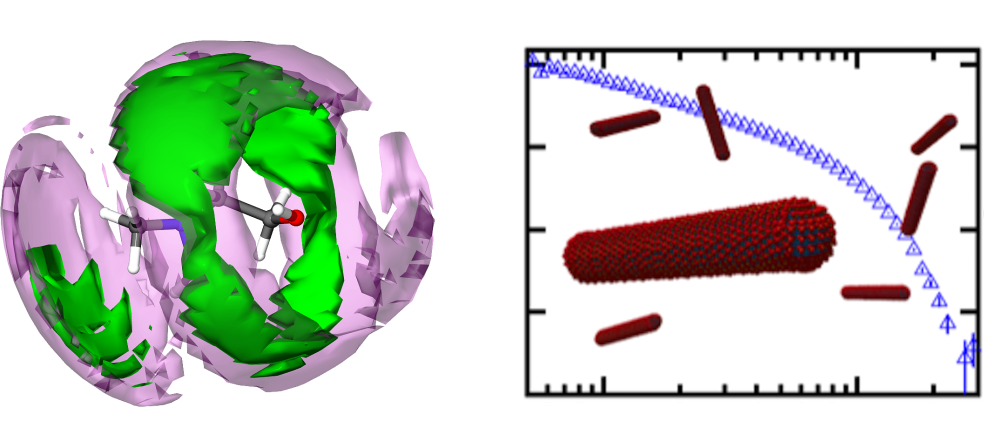Amphiphilic hydrogen bond donors in deep eutectic solvents
Group research area: Deep eutectic solvents
Deep Eutectic Solvents (DES) are a recently-discovered subtype of ionic liquids,1 prepared by complexing a bulky organic salt with a hydrogen bond donor (HBD) molecule in the eutectic molar ratio to create a hydrogen-bonded complex liquid.2 Because of this broad basic definition there are easily more than 106 possible DES. The solvent properties can therefore be hypothetically matched to any requirement, such as biodegradability, polarity, or viscosity. Work in our group has recently shown that DES are capable of supporting the self-assembly of surfactant molecules into micelles with complex phase behaviour, which can be tuned by varying the solvent environment.3,4 Therefore, this project will look into DES solutions containing amphiphilic HBD molecules with different structures. The aim of the project will be to prepare these various novel DES mixtures and characterise their physicochemical properties in order to determine the nanostructure and the self-assembly behaviour of these systems. This will use techniques such as differential scanning calorimetry (DSC), surface tension analysis, rheology and static light scattering (RheoSAS), small-angle neutron scattering (SANS) and small-to-wide angle X-Ray scattering (SWAXS).
There are two separate projects available in this area. The first will investigate the change in self-assembly behaviour and the solvent nanostructure when the DES environment is modified with these special HBD molecules, and the physical properties of these new solvents will be studied. The second project will focus more on the self-assembly behaviour of the amphiphilic HBD molecules in DES, with a view towards creating emulsified phases.
If you are interested in either of these projects please contact Prof. Edler

References:
- E. L. Smith, A. P. Abbott and K. S. Ryder, Chem. Rev., 2014, 114, 11060–82.
- O. S. Hammond, D. T. Bowron and K. J. Edler, Green Chem., 2016, 2736–2744.
- T. Arnold, A. J. Jackson, A. Sanchez-Fernandez, D. Magnone, A. E. Terry and K. J. Edler, Langmuir, 2015, 31, 12894–12902.
- A. Sanchez Fernandez, K. J. Edler, T. Arnold, R. K. Heenan, L. Porcar, N. J. Terrill, A. Terry and A. J. Jackson, Phys. Chem. Chem. Phys., 2016, 18, 14063–14070.
